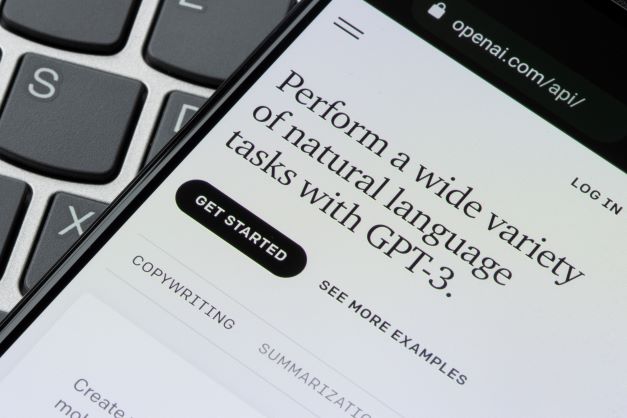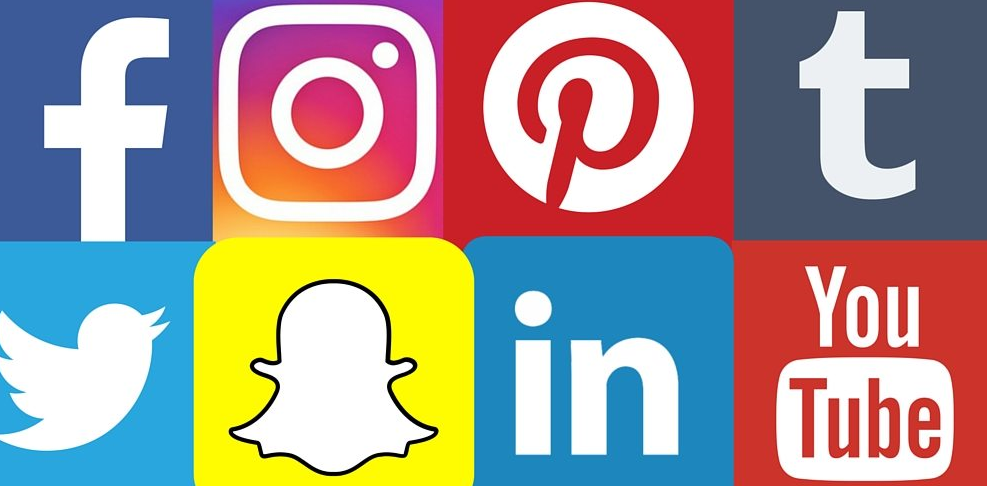Since the dawn of search engines, writers and businesses have aimed to master SEO — the perilous science of getting your results higher up in Google’s search ranks in order to increase web traffic. However, the recent introduction of low-cost, simple-to-use AI copywriting tools enabled by GPT-3 has completely transformed the copywriting game. While AI-based copywriting has been continuously improving for years, it has never been good enough to become more than a novelty. We’re only now just starting to see the effects of businesses adopting AI to generate large amounts of written material and the effects it’s having on the modern copywriting industry.
Even though Google promises to punish such content, AI-generated writing is already being employed at a large scale to produce massive amounts of SEO-driven content. However, AI solutions can be used for more than just avoiding the tactical cat-and-mouse game that many businesses and SEO specialists play with Google. Rather, I envision a future in which AI copywriting tools greatly boost copywriter productivity and, eventually, quality — but with the emergence of such tools, there also comes an increase in demand for talented human writers and editors.
Today, the increasing use of AI tools such as Jasper and CopyAI raises new questions: How do AI copywriters compare to human writers? What effect is the rising usage of AI writing tools having on SEO and search results? Most importantly, how can businesses and creators effectively leverage the AI revolution to their advantage?
The emergence of GPT-3-powered AI-generated writing
GPT-3 is an OpenAI neural network machine learning model that is used to translate typed commands and generate text. GPT-3 is essentially AI for the average person: Despite being trained on outrageously enormous datasets — about 500 billion byte-pair encoded tokens — and conditioned using over 175 billion machine learning parameters, GPT-3 is simple to use.
GPT-3 uses very little input text to generate massive amounts of relevant and sophisticated machine-generated output text. As a result, various automatic copywriting tools that claim to produce high-quality content have appeared. Now, those tools are upending the SEO hunt.
The SEO industry has long outsourced low-cost content writing to India and the Philippines. Many freelancers from these countries have started employing AI to spit out large amounts of content in the last few years. I mean, can you blame them? With Google ranking AI-generated writing in search results leading to an overall rising industry demand, copywriting freelancers have the opportunity to earn more money than ever before. But before you start to fret, according to Blake Emal, CMO of CopyAI, great writers shouldn’t worry about AI taking their jobs (sorry, low-cost international content writers).
While much of the AI-generated work is bad, AI copywriters are not necessarily inferior; in fact, AI technologies can be used to generate content that is practically indistinguishable from human output. However, while AI-generated content is usually grammatically good, AI copywriters are not necessarily factually correct, increasing the possibility of deception (aka fake news). While GPT-3 has the potential to transform the way we produce content, we are only scratching the surface of what this powerful tool is capable of.
How to Collaborate with AI Copywriting Tools
Although artificial intelligence is increasingly being used in content creation, there are still ways for human copywriters to stay relevant. GPT-3 promises extraordinary outputs at breakneck speed, but the finest achievements to far have come from those producing content with AI with specialized human editors and authors. AI-assisted copywriting will eventually have an impact on areas other than search strategy and SEO.
While there are other ways that AI copywriting tools can be used, the following are the main ways:
- Copywriting: Create an AI prompt for the document title, content brief, and proposed tone.
- Writing blog material: Create a content brief for the AI, including the document title, section headers, and tone. After each header, add an empty line and prepare content for each part separately.
- Copy editing: Copy and paste text into the AI’s output field to edit it. To modify this text, highlight it and use the “correct grammar” or “replace” tools.
AI is a tool, and just like any other tool, must be used appropriately in order to be effective. When used correctly, AI copywriting tools can be a valuable addition to any writer’s arsenal. Let us assume that, in the absence of AI, an experienced writer can comfortably create an average of 2,000 words each day. When trained to curate and edit AI-generated content, a writer’s production can fast climb to 4,000 or 5,000 words per day, allowing them to be more productive with fewer false starts.
AI copywriters can also assist new writers in learning the ropes by detecting grammatical faults and recommending structural changes to make their writing more polished and conversational. This helps authors enhance their sentence structure, grammar, vocabulary, and general writing skills over time. There are numerous AI copywriting tools accessible, including Copy.ai, Jasper, GrowthBar, Copysmith, Writesonic, and many more. Each AI has its own set of advantages and disadvantages, much like people do. Some AI copywriting tools excel at grammar and spelling, while others excel at research and conceptualizing material.
Google and the quest for high-quality content
Of course, one of the core applications for AI copywriting tools is to write more content for less money, assisting businesses in ranking higher on key terms via Google Search. Given Google’s present search engine dominance, the company’s perspective on AI-assisted content can have a significant impact on the industry.
When the trade newspaper Search Engine Journal printed the headline “Google Says AI Generated Content Is Against Guidelines” in April, SEO specialists around the world were terrified. Many were left wondering what the piece indicated for the future of their AI-assisted domains and the industry as a whole.
However, Google has been emphasizing for years that it wants high-quality information to populate its search results and has been building technology to combat spam content. It’s evident that Google is merely attempting to prevent the usage of low-quality, spun content — an issue that existed long before AI copywriters — in order to display high-quality, valuable information in search results. Google’s Panda/Farmer upgrade, for example, took off millions of cases of spun content in 2011, affecting 12% of all search results.
So, will you be penalized if you use AI-generated content?
Probably not – at least not yet. According to Miranda Miller, senior managing editor of Search Engine Journal, Google’s algorithms are unable to recognize information generated by language models such as GPT-3.
Even though Google regards all AI-written material as spam, there have been numerous recent case studies of immensely profitable websites that pump out AI content. The most recent Google broad core algorithm upgrade in May 2022 appears to have penalized exclusively AI-written content, whereas AI-written content that is fact-checked and modified by humans appears to avoid penalty and perform admirably.
But, while Google may not be brilliant at spotting AI-generated content right now, that skill will inevitably develop.
Because an AI tool is trained on specific methods with specific data sets, it produces homogeneity in content outputs at the macro level. For example, if Jasper AI was used to cover every cooking-related keyword, future articles employing the same AI to cover the same cooking-related ideas may read similarly enough for Google to recognize the usage of AI more quickly. At the very least, patterns will emerge when there is a large enough data collection to be examined by Google. Because indexing and analyzing the entire internet is at the heart of its economic strategy, this form of pattern detection is unavoidable.
Will Google, however, penalize AI content? It’s quite plausible if people act as opportunistically as they have in the past and if history repeats itself, which it frequently does. If a major chunk of the internet becomes AI-generated and devoid of fact-checking, Google is likely to filter search results for the greater good, as it did with the Panda/Farmer upgrade. To avoid penalties, SEO gurus and entrepreneurs alike would most likely optimize their AI systems in partnership with human editors and fact-checkers.
What AI advancements mean for the future of the written word
What if AI-generated material becomes indistinguishable from human-generated stuff?
This is a matter of when, not if. To bridge that technological gap, AI copywriters will need deeper language modeling, larger datasets, and quality control checks built into their platforms. Based on technological breakthroughs employed by social media platforms to combat the spread of misinformation, the capacity to fact-check text content is not far off. In the next two years, the content production sector will undergo dramatic changes.
First, as single AI copywriters become more prevalent, they get closer to achieving macro-level homogeneity in outputs. This will force Google to create more sophisticated detection algorithms and possibly implement a broad-scale penalty. It will also imply that, in the absence of human intervention, a substantial section of the internet will read more consistently than ever before. This is when highly skilled human editors come in handy.
Second, AI-generated content is best suited for educational purposes rather than investigative reporting. As AI copywriters mature, there will be a continued need for journalists and people conducting independent research to work with human authors. Blue ocean content strategy will gain traction, ushering in a new breed of content specialists. As search results become more competitive due to the influx of AI-written material, content in hitherto unexplored knowledge areas will be in great demand. Content specialists will flock to the wide-open places where new hobbies, specialties, and industries emerge.
Finally, in order to diversify writing styles and increase the readability of material, AI copywriters who specialize in niche topics, styles, and professions will emerge. This has previously been demonstrated in other domains of digital marketing where some platforms excel at, for example, email marketing or sales writing. Writers and editors who collaborate with these niche AI copywriters will be a necessity for generating first-rate material. Human engagement to fact-check and double-check AI outputs will be more in demand as well as AI copywriters grow more specialized. The mix of artificial intelligence for content scaling and human editors for quality assurance will almost certainly become the industry standard.





